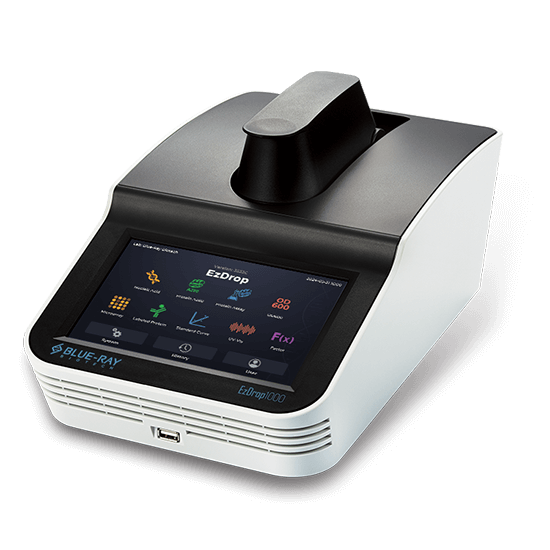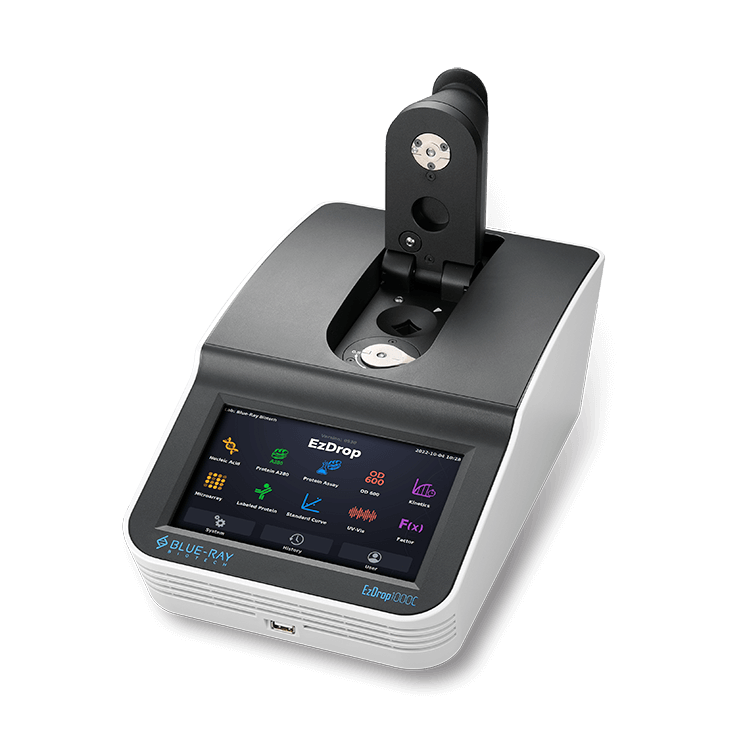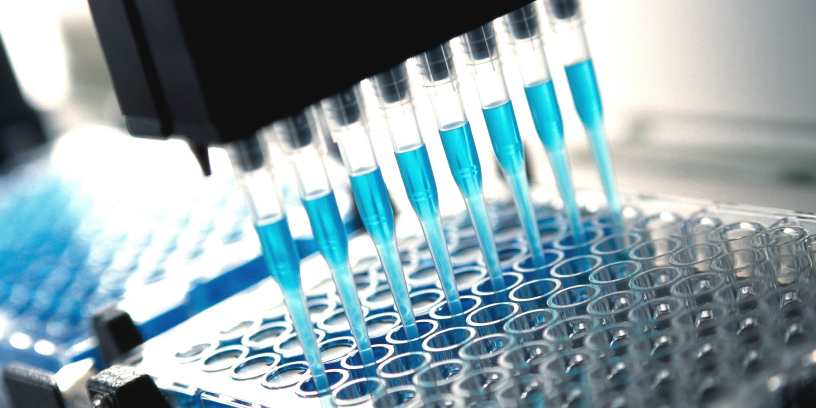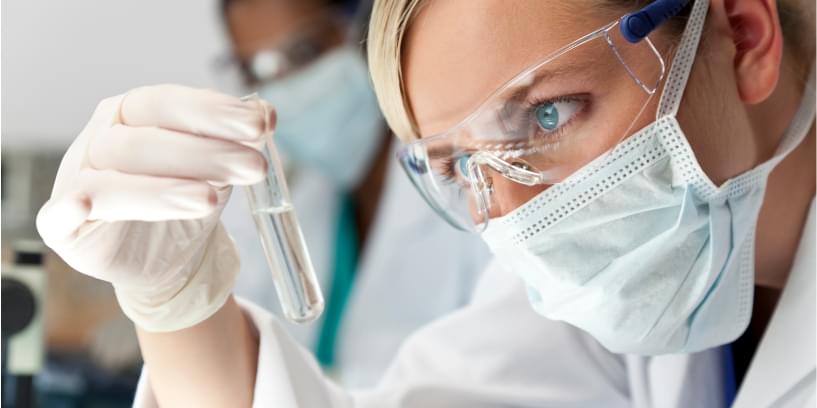
The spectrophotometer is a basic instrument used in laboratories to carry out nucleic acid evaluation, protein analysis and more. In this article, we present the scientific principles behind a new generation of machinery, and suggest three points to consider when choosing the right model.
Table of contents
- What Is a Spectrophotometer Used For?
- New Micro-volume UV-Vis Spectrophotometer Model to Increase Efficiency
- Tips to Choosing the Right Spectrophotometer
Table of contents
- What Is a Spectrophotometer Used For?
- New Micro-volume UV-Vis Spectrophotometer Model to Increase Efficiency
- Tips to Choosing the Right Spectrophotometer
What Is a Spectrophotometer Used For?
Spectrophotometer is an analytic instrument that performs qualitative and quantitative analysis efficiently. It has been widely applied in various scientific and manufacturing fields such as medicine, materials, environment, chemistry, biology and food. In biology labs, it is often used in life scientific lab to measure and analyze nucleic acid and protein samples, DNA/RNA concentration, bacterial content of an organism, and to determine whether an assay solution contains a particular substance.
The models currently available on the market are adapted from a previous UV-Vis spectrophotometer model that requires a cuvette. The light source of this model is usually ultraviolet lamps or tungsten lamps, which have a short lifespan, and requires a minimum half-hour preheating. A minimum of 50μL of diluted sample must be loaded into the cuvette, and as the detection range is limited, only the absorbance can be recorded, while the concentration is not.
New Micro-volume UV-Vis Spectrophotometer Model to Increase Efficiency
The light source of the new spectrophotometer model is from xenon lamps. They have a longer lifespan, are stable, and can carry out experiments without preheating. The new model also does not need a cuvette, only requires a 1-2µL sample, and can obtain both absorbance and concentration values. Therefore, it is also called a “micro-volume spectrophotometer”. Since it requires such a small sample, it eliminates the need of deionized water to clean the cuvette, as well as consumables and complicated steps of operation. By cleaning with lens tissues, samples can be tested continuously, therefore increasing efficiency while reducing pollution and manmade error.
Tips to Choosing the Right Spectrophotometer
So what are some things to look out for when purchasing the right spectrophotometer? Here are 3 main things to look for:
1. Effectiveness
Most spectrophotometers on the market have a testing speed of 8 to 10 seconds, which is a great improvement in comparison to traditional models. The new models, however, take only 3 seconds for evaluation, increasing efficiency by 2 to 3 times. In an era where dissertations are published by the minute, effectiveness is competitiveness.
2. Precision
Some spectrophotometer models are now able to keep the error rate below 1%. This is because the sample window is made of quartz glass and a Nano hydrophobic coating, forcing samples to form droplets through cohesion and minimize light scattering. An additional light source is added, helping the operator to discover air bubbles to ensure the data’s high reproducibility.
3. Calibration
There are two types of calibrations for spectrophotometers: light source calibration and path-length calibration. The luminosity of the light source decreases with use, and must be calibrated once every 1 to 2 years. This can now be done by simply consulting the parameters provided by the manufacturer and calibrating the machine yourself without having to send the machine to an engineer.
The biggest issue with current spectrophotometers is that path length is hard to calibrate. Due to differing levels of sample concentration, the electric motor is used to adjust path length, but path length displacement caused by machinery also affects built-in parameters and formulas. Depending on the number of samples and frequency, the spectrophotometer needs to be recalibrated once every 3 to 6 months.
Choosing a spectrophotometer with a fixed path length is a way to solve the calibration problem. Users can manually choose the suitable path length depending on the sample concentration. If the dsDNA concentration is in a lower range, for example 2-1500 (ng/µl), the longer path length, 0.5mm, is used; for a high sample concentration of 1000-20000 (ng/µl), the shorter 0.05mm path length is used to avoid issues that might be caused by the motor.
Researchers also take operating ease, extensibility and support service into consideration when choosing a machine. Most spectrophotometers now have the function to test nucleic acid, protein A280, protein assay and OD 600. In terms of extensibility, it is important that researchers can input absorbance, set up formulas, define assays, etc.
And the best support services should provide:
- Customer service that can resolve technical and operational problems
- Free manufacturer warranty for non-human damage
- Return Material Authorization (RMA) policy
Once the instrument is purchased, consumers often encounter extra fees on calibration, consumables and maintenance. In order to minimize the issues encountered during the usage of the spectrophotometer, Blue Ray Biotech has developed the EzDrop 1000 Micro-Volume UV-Vis Spectrophotometer, which has a full-spectrum detection range and meets all the important qualities listed above, features fast nucleic acid/protein sample measurement in 3 sec, making it a great addition for laboratory.




